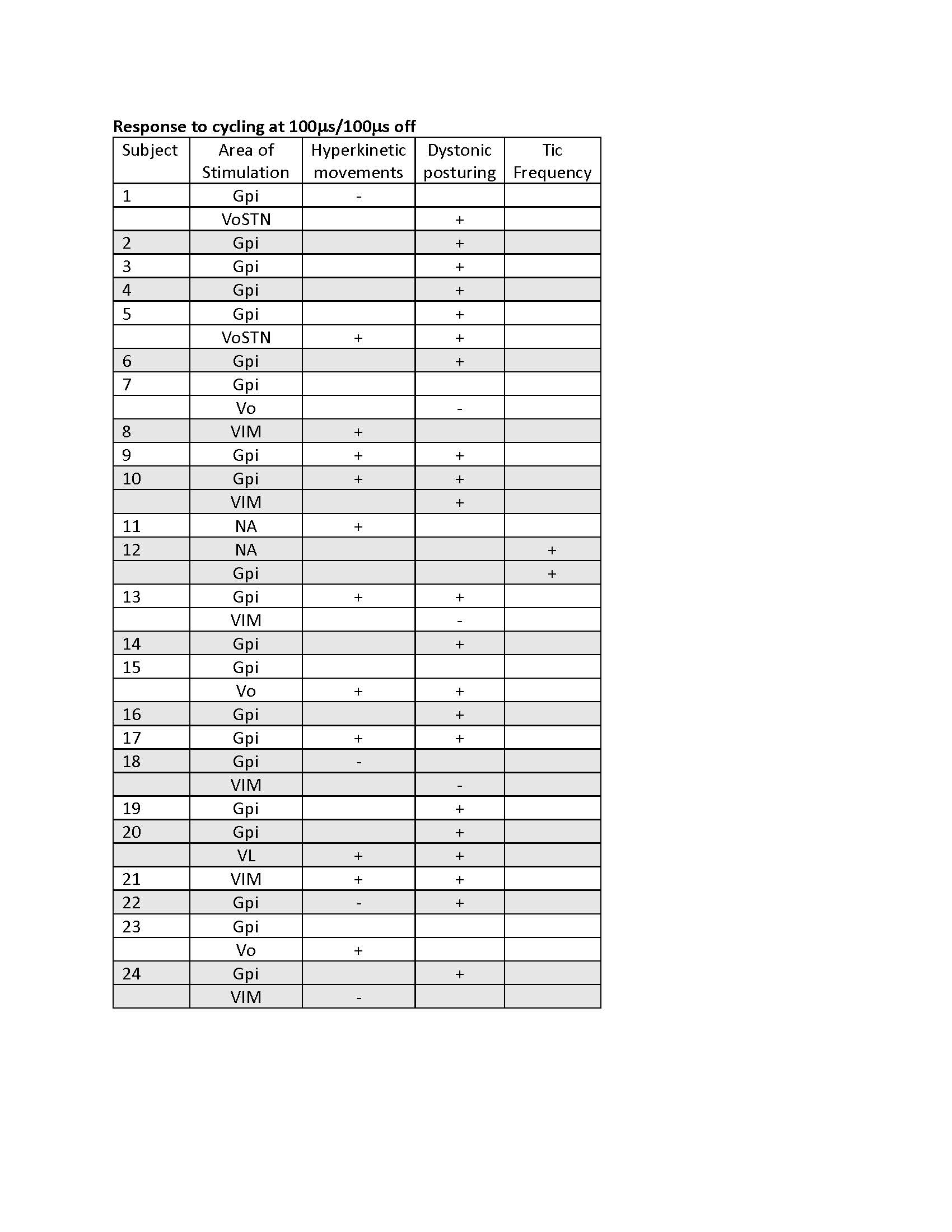Category: Dystonia: Clinical Trials and Therapy
Objective: To test the clinical efficacy of rapid-cycling deep brain stimulation (DBS) in children and young adults with dystonia.
Background: Cycling of DBS for variable on/off periods has been utilized previously in affective disorders and tremor with some clinical benefits noted. It has had limited utilization and examination in treatment of dystonia, predominantly examined at longer on/off durations similar to those utilized in affective disorders. Theta-burst stimulation has been studied through transcranial magnetic stimulation and shown to modulate neuronal excitability within the primary motor cortex. The effect of this pattern in deep brain stimulation targets on motor symptoms has not been explored.
Method: Retrospective chart review was performed on all patients with DBS implanted/programmed at two institutions. Any patient where rapid on/off cycling of DBS pulses was trialed was included in the sample. Patients were evaluated for changes in dystonic postures and hyperkinetic movements.
Results: In patients where 100ms on/100ms off cycling was trialed in the Gpi positive response in dystonic posturing was noted in 71.4% of the twenty one patients. The remainder of patients had no change in dystonic posturing. Hyperkinetic movement was noted to be improved in 19.0% of patients, worsened in 14.3% and unchanged in the remainder.
Trials of cycling in thalamic leads, implanted in various nuclei including VA, Voa/Vop, VIM, and STN were performed in a smaller sample size of twelve patients. A positive response in dystonic posturing was seen in 50% of patients, a negative in 25% and no response in 25%. Improved hyperkinetic movements were also noted in 50% of patients. Worsening hyperkinetic movement was noted in one patient, and 41.7% had no change in movements. In the two patients in which cycling was trialed in the nucleus accumbens a positive benefit was seen in both, with one patient with Tourette Syndrome having a decrease in tic frequency and the other a decrease in hyperkinetic movements.
[Table 1]
Conclusion: Theta-burst cycling of deep brain stimulation at 100ms on/100ms off intervals presents a novel programming option that may improve benefits of stimulation in some dystonic patients. This pattern of stimulation is generally well tolerated, reduces battery drain, and may reduce acclimation to DBS settings. Further trials and investigation are indicated to determine which patients are most likely to benefit from cycling stimulation patterns.
To cite this abstract in AMA style:
J. Maclean, J. Olaya, M. Liker, T. Sanger. Theta-burst Cycling for Deep Brain Stimulation [abstract]. Mov Disord. 2022; 37 (suppl 2). https://www.mdsabstracts.org/abstract/theta-burst-cycling-for-deep-brain-stimulation/. Accessed December 30, 2025.« Back to 2022 International Congress
MDS Abstracts - https://www.mdsabstracts.org/abstract/theta-burst-cycling-for-deep-brain-stimulation/

